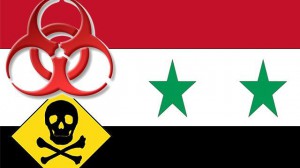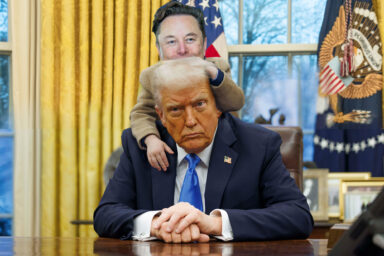What possible connection could there have been between George H.W. Bush and the assassination of John F. Kennedy? Or between the C.I.A. and the assassination? Or between Bush and the C.I.A.? For some people, apparently, making such connections was as dangerous as letting one live wire touch another. Here, in anticipation of the 50th anniversary of the JFK assassination in November, is the sixth part of a ten-part series of excerpts from WhoWhatWhy editor Russ Baker’s bestseller, Family of Secrets: The Bush Dynasty, America’s Invisible Government and the Hidden History of the Last Fifty Years. The story is a real-life thriller.

What possible connection could there have been between George H.W. Bush and the assassination of John F. Kennedy? Or between the C.I.A. and the assassination? Or between Bush and the C.I.A.? For some people, apparently, making such connections was as dangerous as letting one live wire touch another. Here, in anticipation of the 50th anniversary of the JFK assassination in November, is the sixth part of a ten-part series of excerpts from WhoWhatWhy editor Russ Baker’s bestseller, Family of Secrets: The Bush Dynasty, America’s Invisible Government and the Hidden History of the Last Fifty Years. The story is a real-life thriller.
Note: Although these excerpts do not contain footnotes, the book itself is heavily footnoted and exhaustively sourced. (The excerpts in Part 6 come from Chapter 5 of the book, and the titles and subtitles have been changed for this publication.)
For Part 1, please go here; Part 2, here; Part 3, here; Part 4, here; Part 5, here;
A Cauldron of Right Wing Americans, Right Wing Russians, and Nazis

In the ensuing years, George de Mohrenschildt bounced frenetically around every corner of the burgeoning energy landscape. In 1950, together with Poppy Bush’s old friend and former roommate Eddie Hooker, he launched a modest oil investment firm, Hooker and de Mohrenschildt, with “offices in New York, Denver, and Abilene.” At this time West Texas was the center of a new boom. Poppy Bush was working there in his role as a trainee for Neil Mallon’s Dresser Industries. Meanwhile, a vastly more ambitious enterprise was afoot in Dallas, where Mallon relocated Dresser Industries in 1950. At that time, Dallas was still a relatively modest-size city, but growing rapidly. Once primarily a banking center for wealthy cotton farmers, it had become a center of petroleum finance and home to the new breed of superrich independent oilmen. With help from House speaker Sam Rayburn and Senate Majority leader Lyndon Johnson, Dallas had attracted a number of defense contractors, which made it a growing hub of the nation’s military-industrial complex.
By the early fifties, Dallas contained a small and close-knit community of Russian émigrés, perhaps thirty in all. They were drawn together by business interests, an anti-Communist worldview, and participation in a new church they had founded, though many were not religious. Almost every week they attended social gatherings at one another’s homes. George de Mohrenschildt developed ties with the most important of them.
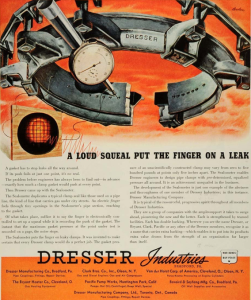 The man who would be considered the “godfather” of the émigré community was Paul Raigorodsky, a former czarist Russian cavalry officer who had fought against the Red Army. After the Bolshevik victory, Raigorodsky came to the United States with the help of the Red Cross and the YMCA. Like many of the other émigrés, he married into American society at a high level: his new father-in-law had set up the Dallas Federal Reserve Bank. Before long, he was on the oil and military track, with important assignments in war and peace, including some from powerful figures in the Bush-Dresser orbit. Some accounts have him serving in the OSS, the forerunner of the CIA. He also became an acknowledged friend of FBI director J. Edgar Hoover. Raigorodsky was a director of the Tolstoy Foundation, a U.S. government-funded organization that assisted Russian exiles.
The man who would be considered the “godfather” of the émigré community was Paul Raigorodsky, a former czarist Russian cavalry officer who had fought against the Red Army. After the Bolshevik victory, Raigorodsky came to the United States with the help of the Red Cross and the YMCA. Like many of the other émigrés, he married into American society at a high level: his new father-in-law had set up the Dallas Federal Reserve Bank. Before long, he was on the oil and military track, with important assignments in war and peace, including some from powerful figures in the Bush-Dresser orbit. Some accounts have him serving in the OSS, the forerunner of the CIA. He also became an acknowledged friend of FBI director J. Edgar Hoover. Raigorodsky was a director of the Tolstoy Foundation, a U.S. government-funded organization that assisted Russian exiles.
The second most influential man in the Russian émigré community was George Bouhe, an oil accountant. In the 1920s, while a high school student in Petrograd, Bouhe had worked for the American Relief Administration (ARA), a spy-cover charity that provided food aid to the Russian population via branch offices set up by American executives in various Russian cities. Bouhe’s supervisors, impressed with his work, urged him to come to the United States. He crossed a river into Finland in the middle of the night and traveled to New York, where he went to work for the Rockefellers’ Chase Bank. Then he moved to Dallas, where he became the bookkeeper for Lewis W. MacNaughton, a partner in the highly influential petroleum geology consulting firm DeGolyer and MacNaughton and a board member of Dresser Industries.
 Bouhe and Raigorodsky both would befriend de Mohrenschildt and remain in close contact with him during 1962 and 1963. The Russian community as a whole bonded naturally with the city’s right-wing oilmen and bankers, and all clustered together under the remarkable leadership of Poppy Bush’s “uncle,” Neil Mallon. In 1951, Mallon launched the Dallas Council on World Affairs. Under this umbrella, Mallon brought together many of Dallas’s most powerful citizens, from oilmen and titans of the burgeoning military-contracting industry to German scientists who had fled the wreckage of Hitler’s Germany to help fashion weapons against the Communist threat.
Bouhe and Raigorodsky both would befriend de Mohrenschildt and remain in close contact with him during 1962 and 1963. The Russian community as a whole bonded naturally with the city’s right-wing oilmen and bankers, and all clustered together under the remarkable leadership of Poppy Bush’s “uncle,” Neil Mallon. In 1951, Mallon launched the Dallas Council on World Affairs. Under this umbrella, Mallon brought together many of Dallas’s most powerful citizens, from oilmen and titans of the burgeoning military-contracting industry to German scientists who had fled the wreckage of Hitler’s Germany to help fashion weapons against the Communist threat.
George de Mohrenschildt moved to Dallas in 1952, established himself as a consulting geologist, and was quickly accepted into the city’s ruling elite. He joined the powerful Dallas Petroleum Club and became a regular at Council on World Affairs meetings. Many of the figures involved in those two entities also showed up on the boards of other influential local groups. One was the Texas chapter of the Crusade for Freedom, a private conduit for laundered money to be sent to “freedom fighters.”
The roots of Crusade for Freedom date to 1949. Senator Herbert Lehman of New York, son of a founder of Lehman Brothers, together with a group of associates established the National Committee for a Free Europe Inc. Backed by Secretary of State Dean Acheson (Yale ’43, Scroll and Key), this group spawned a subsidiary, the Crusade for Freedom, with General Lucius Clay, which proceeded to launch a series of gigantic annual fund-raising campaigns.
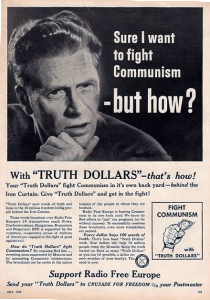 One of the first events it funded was a nationwide radio address by General Dwight D. Eisenhower, urging Americans to support it. The money raised went to entities connected with Radio Free Europe and Radio Liberty, which were centers of anti-Communist propaganda, and consequently home to many former Nazis and Nazi collaborators. At the direction of Washington, these entities laundered U.S. government funds (including monies from the CIA) for use by Eastern European insurgents. This was a forebear of later CIA money-laundering operations, including Iran-contra, in which Poppy Bush played a hidden but significant role. Among the European immigrants who were deeply involved in these operations were Dimitri von and George de Mohrenschildt.
One of the first events it funded was a nationwide radio address by General Dwight D. Eisenhower, urging Americans to support it. The money raised went to entities connected with Radio Free Europe and Radio Liberty, which were centers of anti-Communist propaganda, and consequently home to many former Nazis and Nazi collaborators. At the direction of Washington, these entities laundered U.S. government funds (including monies from the CIA) for use by Eastern European insurgents. This was a forebear of later CIA money-laundering operations, including Iran-contra, in which Poppy Bush played a hidden but significant role. Among the European immigrants who were deeply involved in these operations were Dimitri von and George de Mohrenschildt.
Members of the Texas Crusade for Freedom would become a who’s who of Texans connected to the events surrounding the assassination of John F. Kennedy. In addition to Neil Mallon, members included Raigorodsky, MacNaughton, Everett DeGolyer and Dallas mayor Earle Cabell, brother of Charles Cabell, who was Allen Dulles’s deputy CIA director. Another member was D. Harold Byrd, who owned the building in downtown Dallas that would become known as the Texas School Book Depository. Still another was E. M. “Ted” Dealey, publisher of the Dallas Morning News, who was a harsh critic of Kennedy.
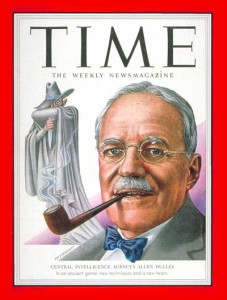
It was a dense web, and its links went to the heart of the intelligence establishment. Neil Mallon had a direct pipeline to Allen Dulles. Prescott Bush noted in a letter around this time that Mallon was “well known to Allen Dulles, and has tried to be helpful to him in the CIA, especially in the procurement of individuals to serve in that important agency.”
Meanwhile, George de Mohrenschildt, thrice-married bon vivant, finally met his match, literally and figuratively in 1957 when he became involved with Jeanne LeGon, who would become his fourth wife. Like George, Jeanne was Russian, and she had come to the United States and settled in New York City in the same year he did. In one of many extraordinary coincidences, they claimed to have lived next door to each other yet did not meet until years later. Jeanne had been born Eugenia Fomenko in 1914 in Harbin, China, near the Russian border, to Russian parents. Her father, Mikhail L. Fomenko, had run the Far Eastern Railroad for the Chinese government until it sold the railroad to the Russian Communist government in 1925.
Fomenko had needed scouts and informants to keep him up-to-date about his competitors and about regional intrigues. Jeanne’s subsequent secret work in America – and that of her brother Sergei – may have emerged from that milieu. She would later tell the Warren Commission that she and her first husband, Robert LeGon, had fled Manchuria when it was under Japanese control because they feared that he would be killed due to his knowledge of a secret Japanese airfield he had worked on. Eventually they made their way to New York, where brother Sergei was working on the top-secret Manhattan Project with J. Robert Oppenheimer.
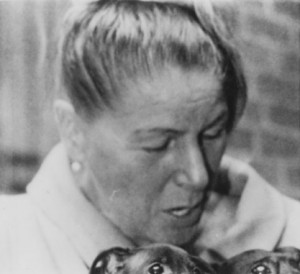
In 1953 Jeanne and Robert joined the Russian elite’s move to Dallas. Her first job there was as a designer with Nardis Sportswear, which was owned by Bernard L. “Benny” Gold, a tough-talking Russian-born Jew who had started out as a Brooklyn cabdriver and ended up as a titan of the Dallas fashion scene. By 1950, splashy Dallas fashions were all the rage, gobbled up by stores all over the United States, and Nardis was the top of the heap. The store shipped goods out on planes via Slick Airways, owned by the oilman and world-renowned explorer Tom Slick, a Dresser Industries board member and good friend of Prescott Bush. Benny Gold knew everyone; he was president of the Dallas Fashion Center and threw huge parties. When Jeanne first arrived in town, Benny Gold put her up in his mansion.
Gold was an intriguing figure. He joined all the anti-Communist groups as well as Neil Mallon’s Dallas Council of World Affairs. He employed people who would prove to have tantalizing connections. While Jeanne designed clothing, her coworker Abraham Zapruder cut the patterns and material. A decade later, Zapruder, by then the owner of his own company, would become world famous for his breathtaking home-movie footage of the Kennedy assassination.
Cuba Sí, Cuba No
During the 1950s, as petroleum reserves in the Southwest declined, oilmen there were looking to the southern hemisphere for new opportunities. George de Mohrenschildt, who always seemed to move at the behest of people of higher rank than himself, turned to Cuba. He later told the Warren Commission that he left the Buckleys’ Pantepec Oil back in 1946 after a falling-out with a company vice president. Yet by 1950 he was working with his former boss, Pantepec president Warren Smith, on the latter’s new firm called the Cuban-Venezuelan Oil Voting Trust Company (CVOVT). In passing, de Mohrenschildt mentioned to the Commission that the CVOVT had managed to obtain leases covering nearly half of Cuba. He appears to have been telling the truth, but Warren Commission counsel Albert E. Jenner Jr. did not find this remarkable fact interesting.
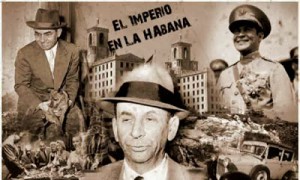
This showed that de Mohrenschildt was no rogue operator or bohemian – as Jenner repeatedly sought to characterize him. Rather he was at the center of a major corporate effort, involving many of America’s largest institutions. Through connections in the Batista regime, the CVOVT had managed to corner exclusive exploration rights to millions of acres on the island. Like all foreign businesses operating in Cuba, it had to work through the dictator’s American intermediaries, notably the mobster Meyer Lansky, who was de facto representative of American “interests” on the island.
The CVOVT never amounted to much besides promising reports and modest production. Still it became a Wall Street darling. Though now almost completely forgotten, on many days in the mid-1950s, it was one of the four or five most actively traded issues on the American Stock Exchange. By November 30, 1956, the New York Times had this announcement:
The Cuban Stanolind Oil Company, an affiliate of the Standard Oil Company (Indiana), has signed an agreement with the Cuban-Venezuelan Oil Voting Trust and Trans-Cuba Oil Company for the development of an additional 3,000,000 acres in Cuba. This is in addition to the original agreement covering 12,000,000 acres. Stanolind has agreed to start drilling within 120 days and maintain a one-rig continuous drilling program [for] three years.
This was apparently a big deal for companies like Stanolind, which had no foreign production at all until it went into Cuba. But the CVOVT was about a lot more than just Cuba. According to its filings, it was formed in Havana in 1950 “to assure continuity of management and stability of policy for shareholders of twenty-four oil companies in South America.” That is, it was some kind of holding company with a focus on “stability” in Latin American countries, which could reasonably be assumed to refer to creating conditions of political stability favorable to the exploration activities.
The Empire Trust Company, a New York-based bastion of power and wealth, appears to have played a key role in the financing of the Cuban venture. A short item in the New York Times of May 14, 1956, noted:
Election of Charles Leslie Rice, a vice president of the Empire Trust Company of New York, as a voting trustee of the Cuban-Venezuelan Oil Voting Trust, was announced over the week-end.
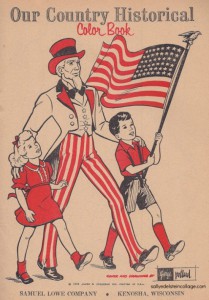 Empire Trust’s John Loeb had a network of associates that amounted to “something very like a private CIA,” wrote Stephen Birmingham in Our Crowd: The Great Jewish Families of New York. Empire worked hard to protect its foreign investments and especially its stake in the defense contractor General Dynamics. Empire entrusted its affairs in Texas to Baker Botts, the law firm of James Baker’s family. Besides Rice, another Empire Trust director was Lewis MacNaughton, a Dresser Industries board member from 1959 to 1967. MacNaughton was the employer of George Bouhe, the Russian émigré who would later introduce George de Mohrenschildt to Lee Harvey Oswald. Perhaps the most curious of the Empire Trust figures was Jack Crichton, a longtime company vice president who joined Empire in August 1953 and remained through 1962.
Empire Trust’s John Loeb had a network of associates that amounted to “something very like a private CIA,” wrote Stephen Birmingham in Our Crowd: The Great Jewish Families of New York. Empire worked hard to protect its foreign investments and especially its stake in the defense contractor General Dynamics. Empire entrusted its affairs in Texas to Baker Botts, the law firm of James Baker’s family. Besides Rice, another Empire Trust director was Lewis MacNaughton, a Dresser Industries board member from 1959 to 1967. MacNaughton was the employer of George Bouhe, the Russian émigré who would later introduce George de Mohrenschildt to Lee Harvey Oswald. Perhaps the most curious of the Empire Trust figures was Jack Crichton, a longtime company vice president who joined Empire in August 1953 and remained through 1962.
Crichton, who had been hired soon after leaving the military in 1946 by oil industry wunderkind Everett DeGolyer, quickly became a go-to guy for numerous powerful interests seeking a foothold in the energy arena. He started and ran a baffling array of companies, which tended to change names frequently. These operated largely below the radar, and fronted for some of North America’s biggest names, including the Bronfmans (Seagram’s liquor), the Du Ponts, and the Kuhn-Loeb family of financiers. According to his former lawyer, Crichton traveled to the Middle East on oil-related intelligence business. On behalf of prominent interests, he was involved with George de Mohrenschildt in his oil exploration venture in pre-Castro Cuba. In a 2001 oral history, Crichton volunteered that he was a friend of George de Mohrenschildt’s: “I liked George. He was a nice guy.”
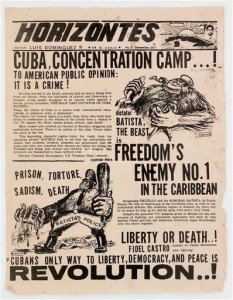 By 1956, in addition to his other duties, Crichton started a military intelligence reserve unit on the side. On the day of Kennedy’s assassination, as will be elaborated upon in chapter 7, he would arrange for a member of the Dallas Russian community to rush to Marina Oswald’s side and provide translations for investigators – which were far from literal translations of her Russian words and had the effect of implicating her husband in Kennedy’s death. Shortly after the assassination, Crichton would become the GOP nominee for governor of Texas in a race against the incumbent John Connally, who had recovered from his wounds of November 22. On the same ticket was the Republican nominee for the United States Senate, Poppy Bush.
By 1956, in addition to his other duties, Crichton started a military intelligence reserve unit on the side. On the day of Kennedy’s assassination, as will be elaborated upon in chapter 7, he would arrange for a member of the Dallas Russian community to rush to Marina Oswald’s side and provide translations for investigators – which were far from literal translations of her Russian words and had the effect of implicating her husband in Kennedy’s death. Shortly after the assassination, Crichton would become the GOP nominee for governor of Texas in a race against the incumbent John Connally, who had recovered from his wounds of November 22. On the same ticket was the Republican nominee for the United States Senate, Poppy Bush.
Unfortunately for the rich and powerful behind the Cuban oil venture in the 1950s, just as the possibility of extracting vast wealth from that small island drew increasing interest from Wall Street, Fidel Castro’s revolution was gaining strength. At the same time, what looks to have been intelligence operations under oil industry cover were moving into position, as Poppy Bush began moving his rigs to Howard Hughes’s Cay Sal Bank in the Bahamas.
On January 1, 1959, Fulgencio Batista fled Cuba, and the next day Castro’s army marched into Havana.
On November 22, 1959, the New York Times reported that the new Cuban government had approved a law that would reduce the size of claims for oil exploration and halt large-scale explorations by private companies. These claims were now limited to twenty thousand acres, a major setback for companies such as CVOVT, with its fifteen million acres.
According to the Times, big foreign oil companies had already spent more than thirty million dollars looking for oil over the preceding twelve years. The article cited petroleum industry sources speculating that nationalization of the refining industry was soon to come. The government also imposed a 60 percent royalty on oil production, believed to be the highest anywhere. Standard Oil of New Jersey had, according to the article, invested thirty-five million dollars in a Cuban refinery, and other companies had invested comparable sums.
Among other things, the new law put an end to the go-go days of the Cuban-Venezuelan Oil Voting Trust stock. That story was summed up neatly in William A. Doyle’s syndicated advice column, “The Daily Investor,” on August 14, 1961:
Q. I bought some shares of Cuban-Venezuelan Oil Voting Trust a couple of years ago. This stock was listed on the American Stock Exchange but I never see it quoted there any more. What’s the trouble?
A. The trouble is spelled C-a-s-t-r-o. When that bearded dictator took over the government in Cuba, he started kicking American investors smack in the pocketbook. The Cuban-Venezuelan Oil Voting Trust story is somewhat involved. But its chief cause of grief came when the Communist-oriented Cuban government refused to extend its concession to explore for oil. That just about wrecked this outfit. The stock’s price dropped. You won’t find the shares quoted on the American Stock Exchange, because this stock was de-listed from that exchange, as of Dec. 1, 1960. Technically, it is still possible to buy and sell these shares in the over-the-counter market. But you’ll be lucky if you can get 10 cents a share.
Brown Brothers Harriman also had a stake in Cuban affairs that went back at least to the 1920s. Its affiliate, the Punta Alegre Sugar Corporation, controlled more than two hundred thousand acres in the province of Camagüey. Officials of the firm served on the board of Punta Alegre up to the moment that Castro expropriated this land – and even afterward, as the sugar company began moving its remaining assets to the United States.
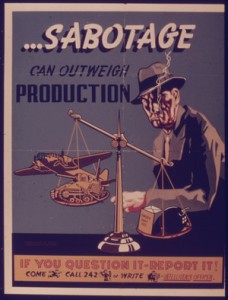
The CIA’s Allen Dulles responded quickly to developments on the island. He created the Cuban Task force, with teams in charge of clandestine operations, psychological warfare, and economic and diplomatic pressure. Out of these emerged Operation 40, an elite group of Cuban exiles who, after specialized training, were to infiltrate Cuba and deal a mortal blow to the revolution, including the assassination of its principal leaders.
The chief of the task force was Tracy Barnes, a Yale graduate and Dulles’s wartime OSS comrade who was related to the Rockefeller clan by marriage. More than a decade earlier, Barnes’s first CIA job had been as deputy director of the Psychological Strategy Board, a little-known entity that explored everything from the use of psychotropic drugs as truth serum to the possibility of engineering unwitting assassins, i.e., Manchurian candidates. Later, he worked on the successful 1954 operation to overthrow the democratically elected president of Guatemala, Jacobo Arbenz. Barnes had received propaganda support from David Atlee Phillips and E. Howard Hunt, including the distribution of faked photographs purporting to show the mutilated bodies of Arbenz opponents.
Phillips and Hunt would be hounded by allegations that they had been present in Dallas on November 22, 1963. Both men consistently denied it. But according to his son St. John Hunt, E. Howard Hunt began confessing knowledge of a plot against Kennedy near the end of his life and named Phillips as one of the participants.
Hunt and Phillips attended the first meeting of the Cuban Task Force, held January 18, 1960, in Barnes’s office. Barnes spoke at length on the objectives. He explained that Air Force General Charles Cabell, a Texan (and brother of Dallas’s mayor), would be in charge of air cover for an invasion, and that Vice President Richard Nixon, whose brief included some national security areas, was the administration’s Cuba “case officer.”
In his memoirs former Cuban intelligence official Fabian Escalante asserted that Nixon had met with an important group of Texas businessmen to arrange outside funding for the operation. Escalante, whose service was vaunted for its U.S. spy network, claimed that the Texas group was headed by George H. W. Bush and Jack Crichton. Escalante’s assertion cannot be easily dismissed: Crichton’s role in covert operations, about which extensive new information is provided in chapter 7, was little understood at the time Escalante published his memoirs.
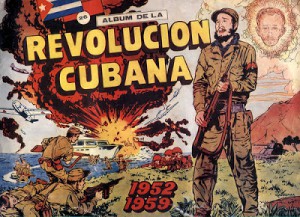 In March 1960, the Eisenhower administration signed off on a plan to equip and train Cuban exiles, and drills soon began in Florida and Guatemala. One of Dulles’s top three aides, the covert operations chief Richard M. Bissell (Yale ’32), was made director. Around this time, George de Mohrenschildt happened to take a business trip to Mexico City, where the CIA station was deeply involved in the coming attractions.
In March 1960, the Eisenhower administration signed off on a plan to equip and train Cuban exiles, and drills soon began in Florida and Guatemala. One of Dulles’s top three aides, the covert operations chief Richard M. Bissell (Yale ’32), was made director. Around this time, George de Mohrenschildt happened to take a business trip to Mexico City, where the CIA station was deeply involved in the coming attractions.
By the fall of 1962, when de Mohrenschildt was devoting much of his time to squiring Lee Harvey Oswald, he had gained entrée to the crème de la crème of the petroleum world. One longtime buddy of his and of Poppy Bush’s, offshore drilling expert George Kitchel, would tell the FBI in 1964 that de Mohrenschildt counted among his good friends the oil tycoons Clint Murchison, H. L. Hunt, John Mecom, and Sid Richardson. Other Commission testimony revealed that in the couple of years prior to the Kennedy assassination, de Mohrenschildt had traveled frequently from Dallas to Houston, where he visited with figures such as George Brown of Brown and Root, the construction and military contracting giant that helped launch LBJ’s career, and Jean de Menil of Schlumberger, the huge oil services firm.
Several of these men had even sent de Mohrenschildt abroad on business; one could be forgiven for wondering if these trips were in fact what the CIA calls “commercial cover.” George Brown had dispatched him to Mexico, where his mission seemed to be heading off a Mexican government oil deal with the Soviet deputy premier Anastas Mikoyan, who arrived at the same time. Murchison dispatched him to Haiti on several occasions. In 1958, he went to Yugoslavia on what was said to be business for Mecom – whose foundation, the San Jacinto Fund, was later identified as a CIA funding conduit.
The Warren Commission knew at least pieces of all this. Yet in 1964, after two and a half days of testimony by George de Mohrenschildt and his wife Jeanne, the Commission would conclude that George was essentially an eccentric if well-connected figure whose life encompassed a series of strange coincidences.
Next: Part 7: Empire Strikes Back
For Part 1, please go here; Part 2, here; Part 3, here; Part 4, here; Part 5, here;Part 6, here; Part 7, here; Part 8, here; Part 9, here; Part 10, here.
[box]WhoWhatWhy plans to continue doing this kind of groundbreaking original reporting. You can count on it. But can we count on you? We cannot do our work without your support.
Please click here to donate; it’s tax deductible. And it packs a punch.[/box]
Image Credits:
IMAGE: ROUGHNECKS IMAGE: Oil Girls IMAGE: Dresser IMAGE: Sure I want to fight IMAGE: Time IMAGE: Henry Neil Mallon IMAGE: Prescott Bush and Ike IMAGE: Jeanne IMAGE: MAFIA IN CUBA IMAGE: Horizontes IMAGE: Revolucion Cubana IMAGE: Sabotage IMAGE: Great Famine IMAGE: COLOR BOOK
